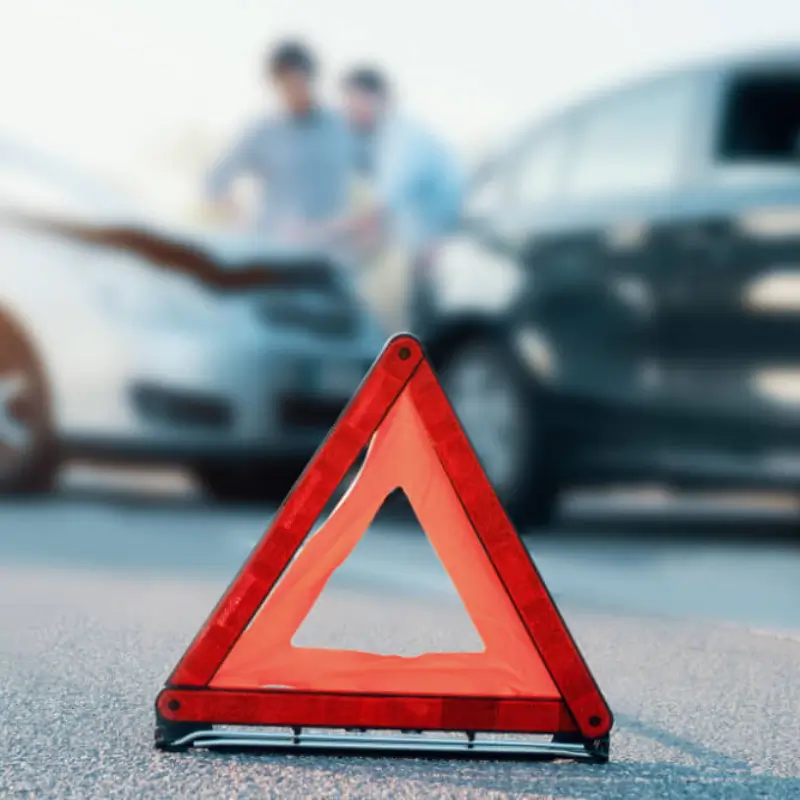Home / Compare Car Insurance / What to do if your car b…

Key takeaways
- If there’s a roadside emergency (e.g. a traffic accident or car fire), you need to call 000 immediately and ask for emergency services.
- Putting on your hazard lights is an effective way to signal that your vehicle has broken down, especially on a busy road.
- Whether your car breaks down on a motorway or in a tunnel, it’s important to get off the road as soon as you realise something is wrong.
Tips from our car insurance expert
Compare the Market’s car insurance expert, Adrian Taylor, has tips for how you can prepare for or potentially prevent a car breakdown in Australia.

Ensure your car is regularly serviced
Each time you get your car serviced, ensure the tyre pressure is checked, the car battery is fully operational and your oil and radiator tanks are above level. This is particularly important if you’re planning a road trip.
Store an emergency kit in your car
An emergency kit can really help you during a vehicle breakdown. Store a high-visibility vest and a torch in your car in case you break down at night or in a dark location. A first aid kit could also come in handy in case anyone is injured.
Keep your mobile phone ready
Make sure your mobile phone is charged and that you have the Emergency+ app downloaded, so emergency services can use your phone’s GPS to locate you.1 It’s also worth adding emergency and roadside assistance service numbers to your phone contacts in case your car breaks down.
Steps for when your car breaks down
Turn on your hazard lights
When you first notice trouble with your car, turn on your hazard lights. They will act as warning lights and indicate to other motorists that there’s a problem and to be cautious.2
Pull your vehicle over
You must pull off the road as soon as it’s safe to do so.3 Whether it’s in an emergency lane along a busy highway or staying as far to the left as possible on other roads, keeping yourself, passengers and other motorists safe is crucial.
Be careful when exiting your car
Leave your vehicle from the passenger side (away from the road) and stay far away from the passing traffic. If there’s a road safety barrier, move behind it or retreat to a safe place away from danger.
If it’s unsafe to exit your car, stay inside and ensure everyone in the vehicle keeps their seatbelts fastened.
Phone for assistance
Call for roadside assistance either from your car insurance or standalone provider. If you don’t have this service, you can purchase roadside assistance and use it instantly, just bear in mind that there may be a callout fee. Your state or territory’s transport department may also have a breakdown number you can call.
Some tips if your car breaks down
On a motorway
If possible, you should exit the highway as soon as you notice something wrong with your vehicle. If you can’t exit, pull over on the breakdown lane or the side of the road as far from traffic as you can. Exit the vehicle using the doors away from traffic and get behind crash barriers to wait for your incident response unit to arrive.
In a tunnel
In a breakdown situation, try to leave the tunnel as soon as you safely can.4 If you can’t, you should pull over into a breakdown bay or the side of the lane, away from the traffic. You should also turn on your hazard lights and exit the broken-down vehicle (away from oncoming traffic) only if you can wait at a safe distance. If there’s nowhere secure, remain in your vehicle (with a securely fastened seatbelt) while waiting for an incident response unit to reach you. You can also use the nearest tunnel emergency phone to call the tunnel’s control room.
With passengers
If it’s safe to leave the car, make sure everyone – the driver and any passengers – exits from the passenger side, away from the traffic.2 If there’s no safe option to exit the vehicle, remain inside and ensure you and all your passengers have their seat belts on.
Without access to a phone
If you can’t call for help (either from your phone or a roadside help phone), make sure you stay with your car.2 Wait for help, but don’t walk along highways or motorways if that’s where you’re stuck.
At night
As well as activating your hazard lights, you should put your parking lights on if your car breaks down at night.2 If you decide to get out of your vehicle, it’s important to get out from the side away from traffic.
Meet our car insurance expert, Adrian Taylor
As a General Insurance expert with over 13 years’ experience in financial services, Adrian Taylor is passionate about demystifying car insurance for consumers, so they have a better understanding of what they’re covered for. Adrian’s goal is to make more information available from more insurers, to make it easier to compare and save.
Want to know more about car insurance?
- Emergency+ – Save the App that could save your life. Accessed May 2024.
- Queensland Government: Department of Transport and Main Roads – Breakdown safety on motorways and freeways. Accessed May 2024.
- Victoria State Government – Incident response service. Accessed May 2024.
- Queensland Government: Department of Transport and Main Roads – Tunnel safety. Accessed May 2024.


